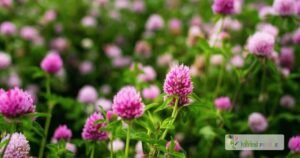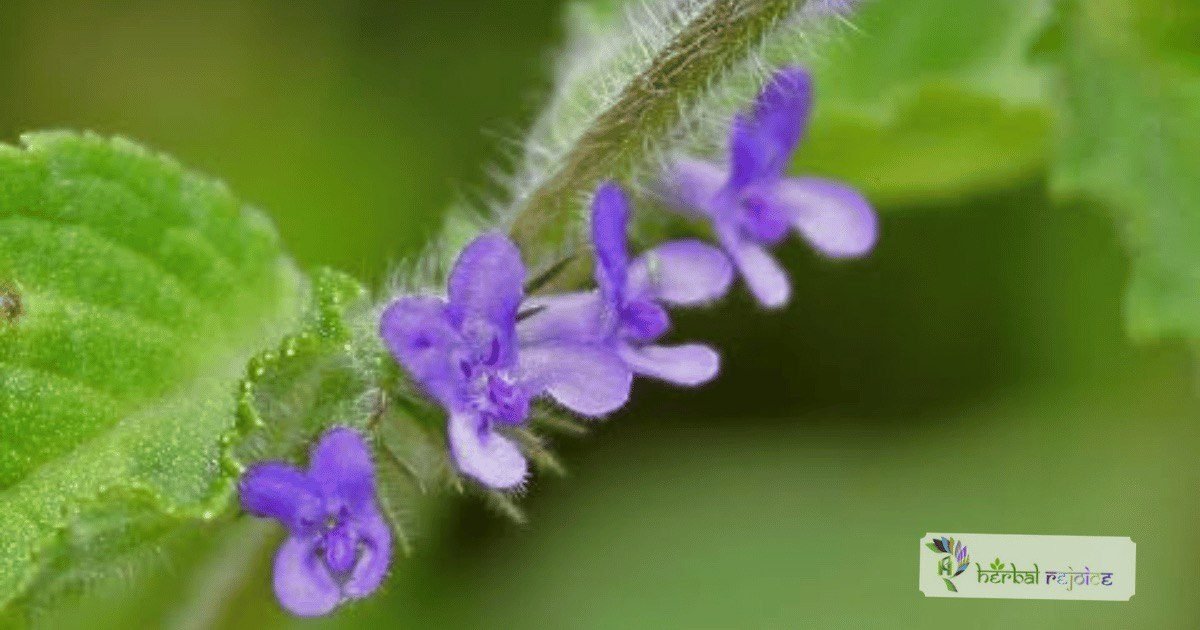Introduction
Trifolium pratense, commonly known as Red Clover, is a perennial herb found in regions ranging from Kashmir to Garhwal at elevations of 1,200–2,400 meters, as well as in the Nilgiris.
Red Clover in traditional medicine is used as a natural remedy for various health conditions such as bronchitis, coughs, hard swellings, tumors.

Names and Habitat
It belongs to the Papilionaceae or Fabaceae family. In Unani medicine, it is referred to as Ispast, Berseem, and Clover (often equated with T. alexandricum Linn.). In Punjabi folklore, it is known as Trepatra. This article will explore the various benefits, medicinal uses, and properties of Red Clover.
Traditional Uses Of Red Clover
Traditionally, Red Clover has been used for its many medicinal properties. The flowers of the plant are known for their deobstruent, antispasmodic, expectorant, sedative, anti-inflammatory, and antidermatosis actions.
They have been used to treat skin conditions such as psoriasis, eczema, and other dermatological diseases. Additionally, the flowers serve as an expectorant, providing relief for coughs and bronchitis.
Moreover, Red Clover has also been used as an antineoplastic agent against tumors and hard swellings.
Active Constituents of Red Clover
Scientific studies have shown that Red Clover contains various compounds that contribute to its medicinal properties. Iso-flavonoids such as calycosin-7-galactoside, calycosin, pseudobaptigenin, fornononetin, diadzein, and medicagol are present in the plant.
These compounds, along with hydroxypterocarpans, contribute to the plant’s therapeutic effects. Additionally, the flowerheads of Red Clover contain phenolic glycosides, flavonoids, salicylates, coumarins, cyanogenic glycosides, starch, and fatty acids.
Anti-inflammatory Properties of Red Clover
Flavonoids found in the flowers and leaves of Red Clover have been found to have estrogenic activity. This makes them useful in providing relief for menopausal symptoms.
The British Herbal Pharmacopoeia recognizes the anti-inflammatory properties of Red Clover flowers. This further confirms the plant’s potential therapeutic benefits.
Other Species
It is important to note that Trifolium alexandricum, another species of Clover, is also referred to as Ispast in the National Formulary of Unani Medicine. It is distinct from Trifolium pratense, but both species have similar uses in traditional medicine.
Conclusion
In conclusion, Red Clover (Trifolium pratense Linn.) is a versatile herb with various medicinal properties. Its flowers have been traditionally used for their deobstruent, antispasmodic, expectorant, sedative, anti-inflammatory, and antidermatosis actions.
Scientific studies have revealed the presence of bioactive compounds such as iso-flavonoids, phenolic glycosides, flavonoids, salicylates, coumarins, cyanogenic glycosides, starch, and fatty acids in Red Clover.
These compounds contribute to its therapeutic effects, including relieving menopausal symptoms and providing anti-inflammatory benefits. The use of Red Clover in traditional medicine demonstrates its potential as a natural remedy for various health conditions.
Frequently Asked Questions (FAQ)
What is Red Clover?
Red Clover, scientifically known as Trifolium pratense Linn., is a perennial herb that belongs to the Papilionaceae family.
Where is Red Clover found?
Red Clover is found in regions ranging from Kashmir to Garhwal at elevations of 1,200–2,400 meters, as well as in the Nilgiris.
What are the medicinal properties of Red Clover?
Red Clover has various medicinal properties, including deobstruent, antispasmodic, expectorant, sedative, anti-inflammatory, and antidermatosis actions.
What skin conditions can Red Clover be used for?
Red Clover has been traditionally used to treat skin conditions such as psoriasis, eczema, and other dermatological diseases.
How does Red Clover provide relief for coughs and bronchitis?
The flowers of Red Clover serve as an expectorant, providing relief for coughs and bronchitis.
Red Clover be used as an antineoplastic agent?
Yes, Red Clover has been used as an antineoplastic agent against tumors and hard swellings.
What compounds are present in Red Clover?
Red Clover contains compounds such as iso-flavonoids, hydroxypterocarpans, phenolic glycosides, flavonoids, salicylates, coumarins, cyanogenic glycosides, starch, and fatty acids.
What are the estrogenic properties of Red Clover?
Flavonoids found in the flowers and leaves of Red Clover have estrogenic activity, making them useful in providing relief for menopausal symptoms.
What are the anti-inflammatory properties of Red Clover?
The British Herbal Pharmacopoeia recognizes the anti-inflammatory properties of Red Clover flowers, further confirming its potential therapeutic benefits.
Is Trifolium alexandricum the same as Trifolium pratense?
Trifolium alexandricum is another species of Clover that is referred to as Ispast in the National Formulary of Unani Medicine. It is distinct from Trifolium pratense, but both species have similar uses in traditional medicine.
How has Red Clover been traditionally used in medicine?
Red Clover has been traditionally used for its deobstruent, antispasmodic, expectorant, sedative, anti-inflammatory, and antidermatosis actions.
What bioactive compounds are found in Red Clover?
Iso-flavonoids, phenolic glycosides, flavonoids, salicylates, coumarins, cyanogenic glycosides, starch, and fatty acids are bioactive compounds found in Red Clover.
What are the potential benefits of Red Clover?
Red Clover has potential benefits for relieving menopausal symptoms and providing anti-inflammatory effects.
What are the traditional uses of Red Clover?
Traditionally, Red Clover has been used to treat skin conditions, coughs, bronchitis, tumors, and hard swellings.
Can Red Clover be used as a natural remedy?
Yes, the use of Red Clover in traditional medicine demonstrates its potential as a natural remedy for various health conditions.
What are some specific dermatological diseases that Red Clover can treat?
Red Clover has been used to treat dermatological diseases such as psoriasis and eczema.
Can Red Clover be used for respiratory conditions?
Yes, Red Clover can provide relief for coughs and bronchitis due to its expectorant properties.
Does Red Clover have sedative effects?
Yes, Red Clover has sedative properties.
Can Red Clover help with hormonal imbalances?
Yes, Red Clover’s estrogenic properties make it useful for relieving menopausal symptoms and hormonal imbalances.
Are there any unwanted side effects of using Red Clover?
While Red Clover is generally safe for most people, it may cause some minor side effects such as digestive upset or allergic reactions in some individuals. It is always best to consult a healthcare professional before using any herbal remedy.





